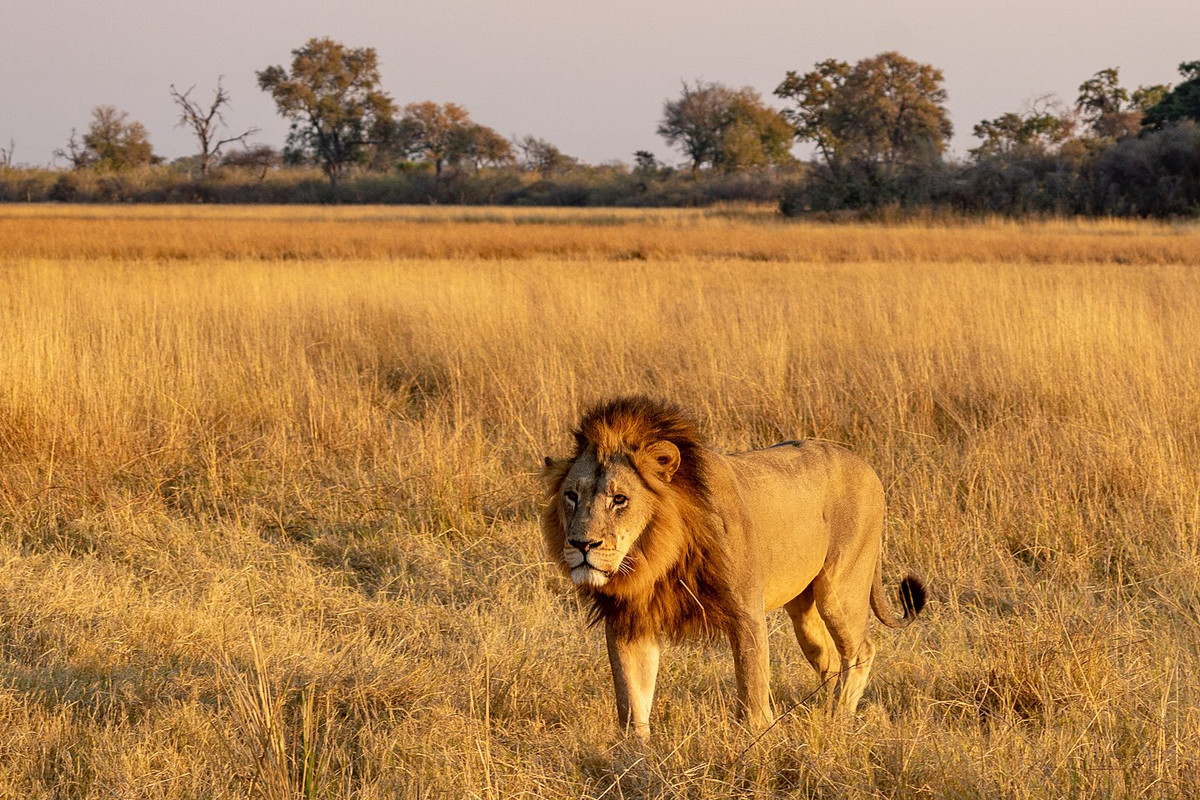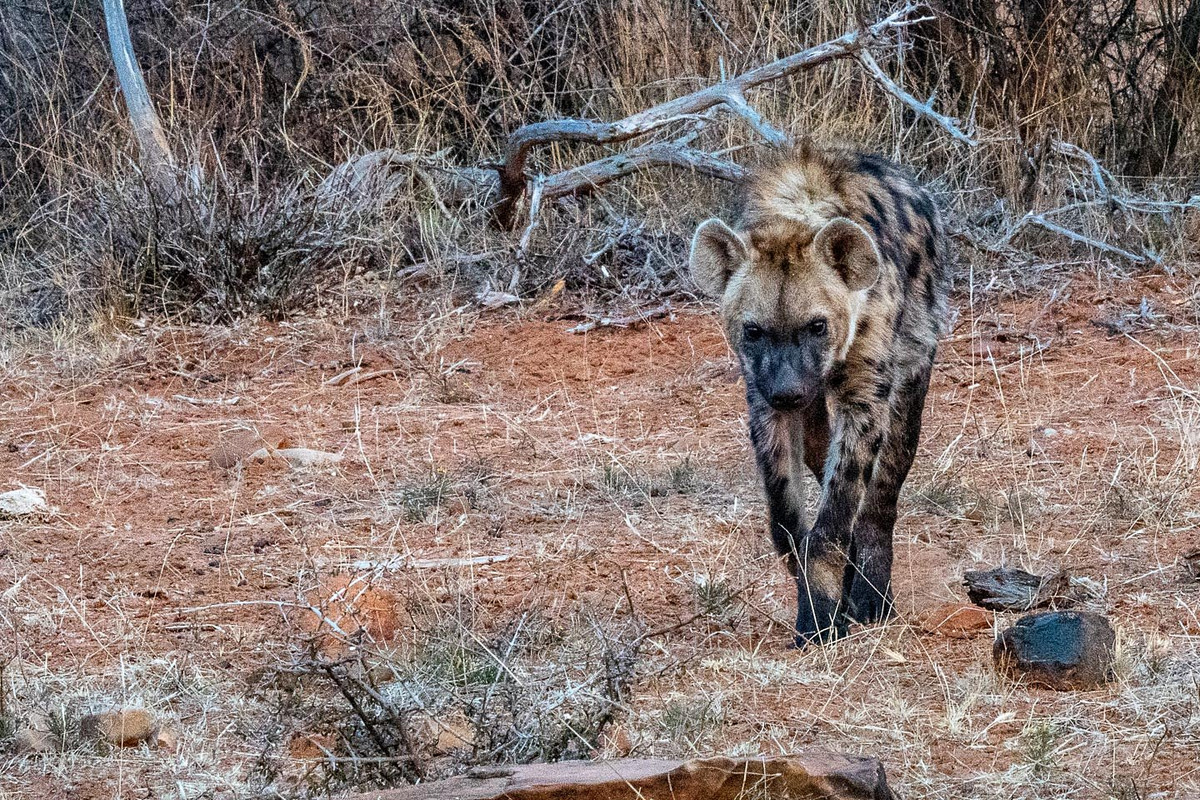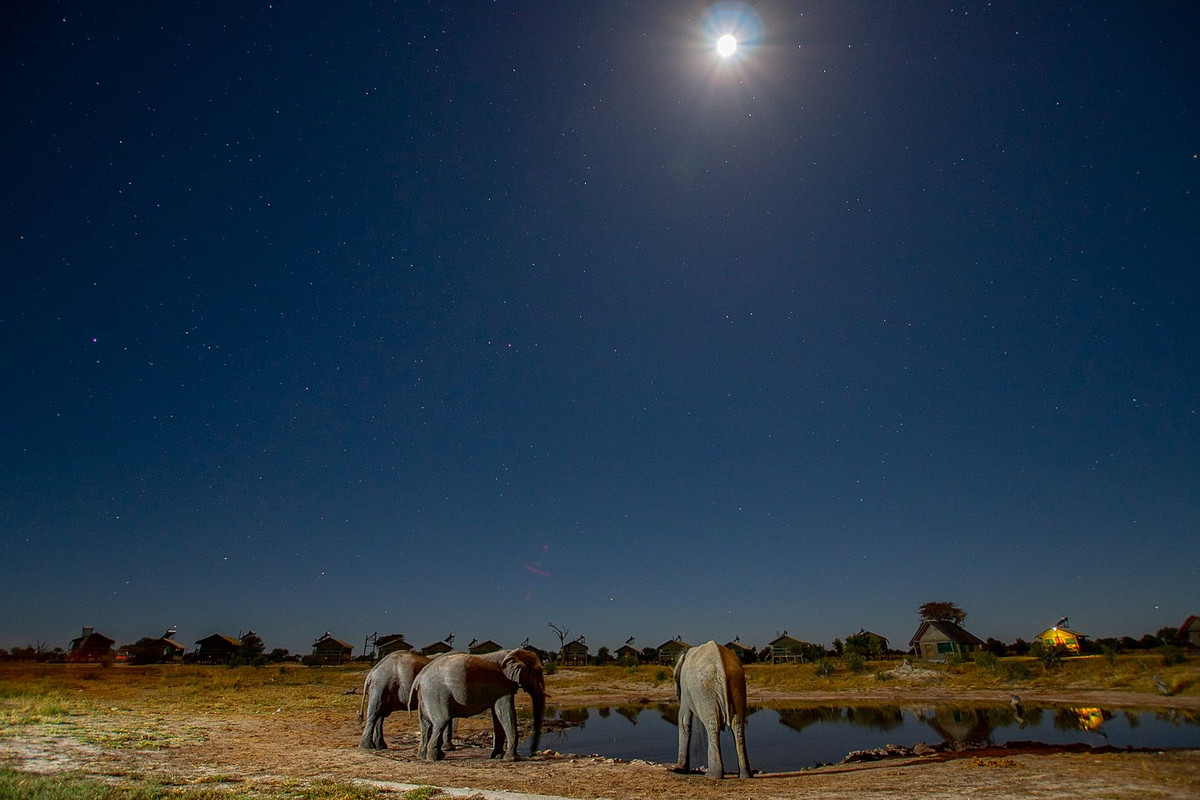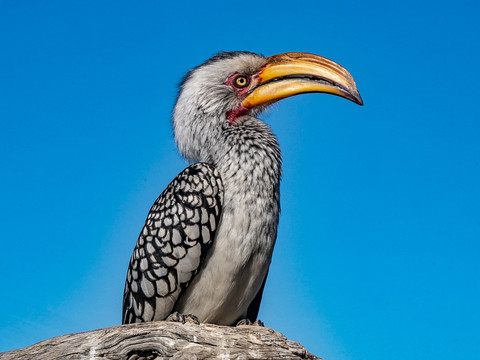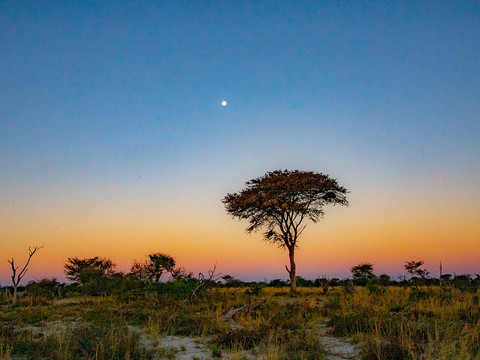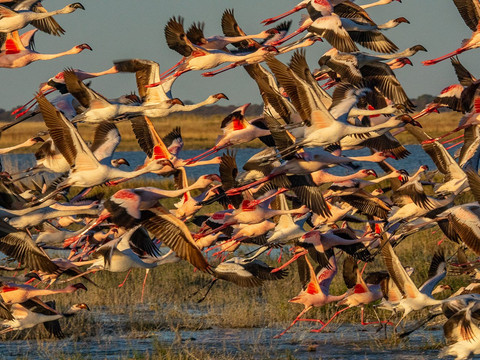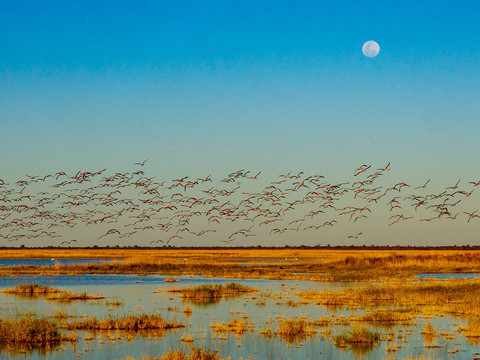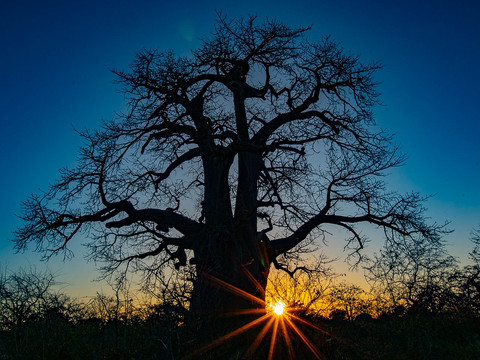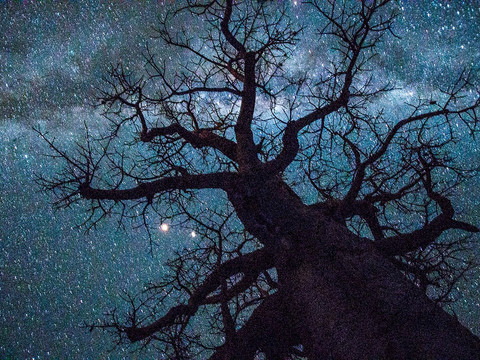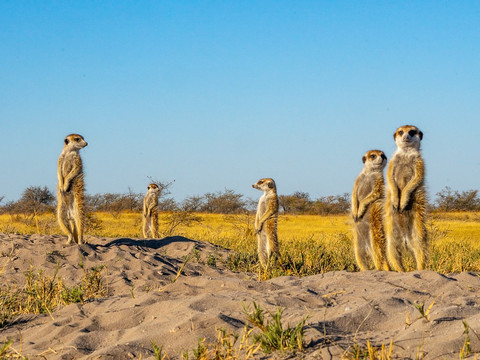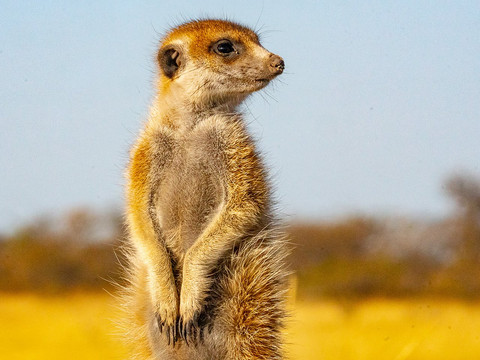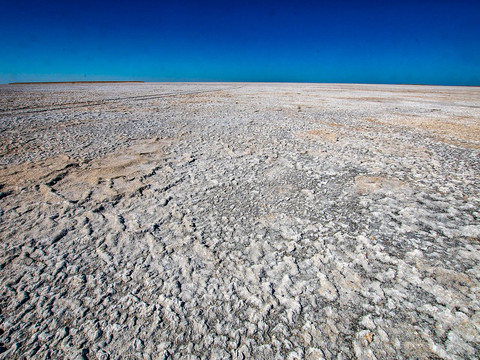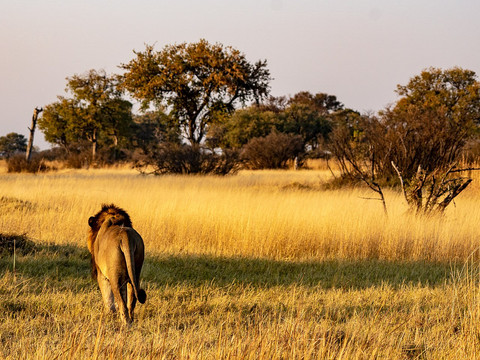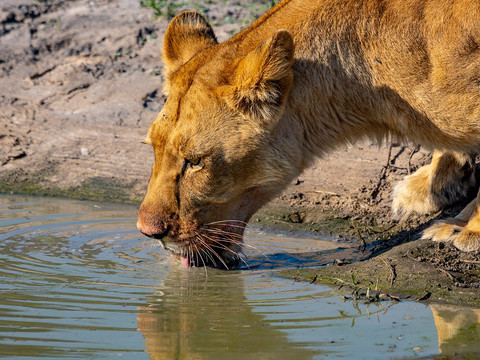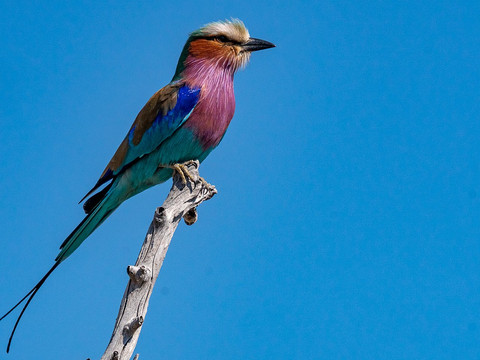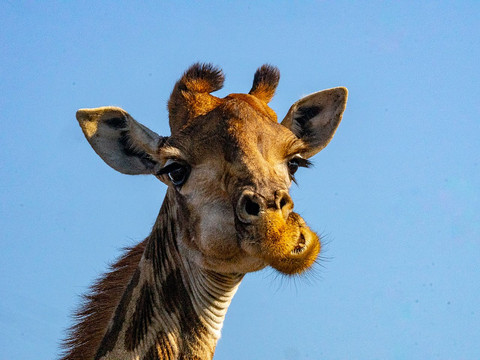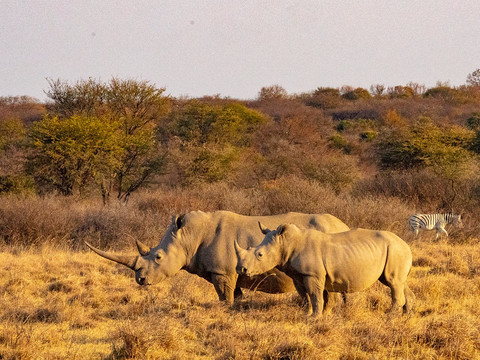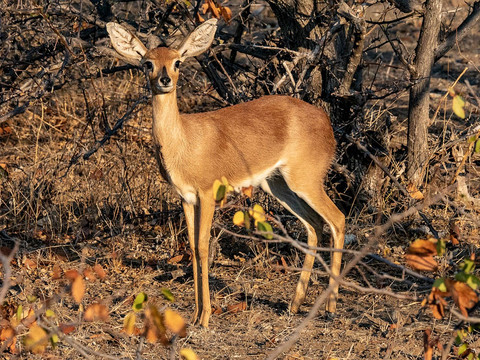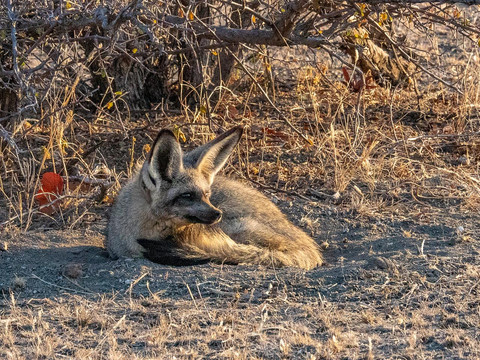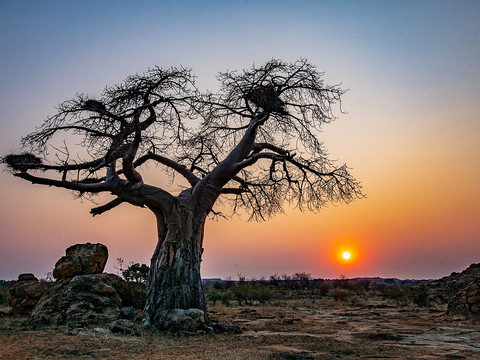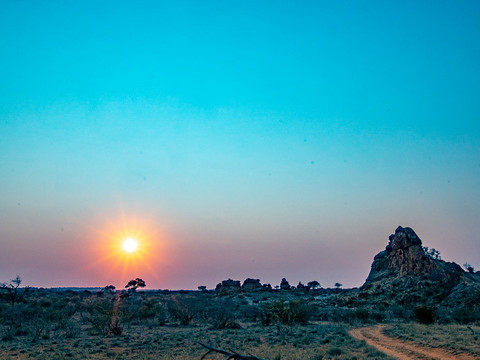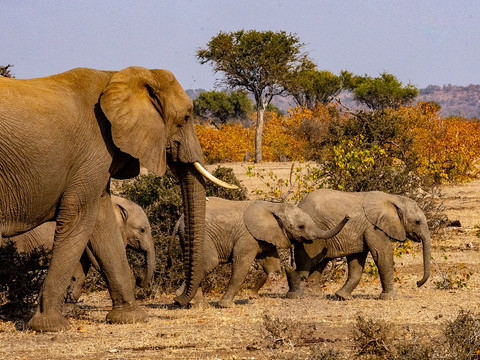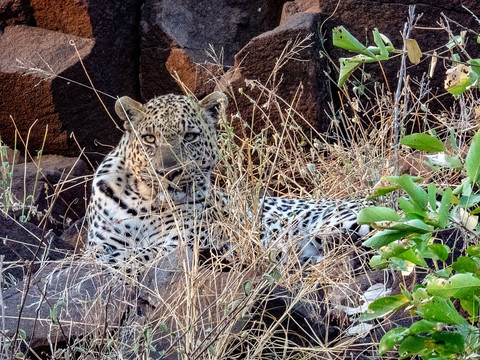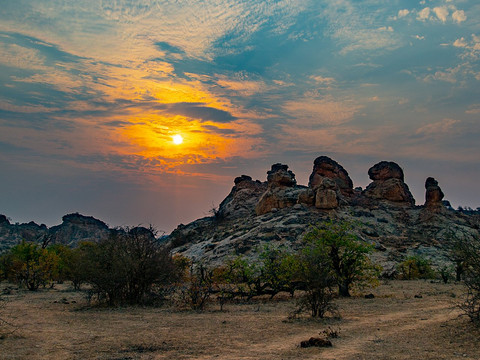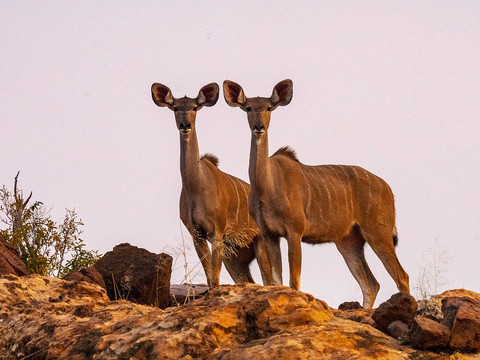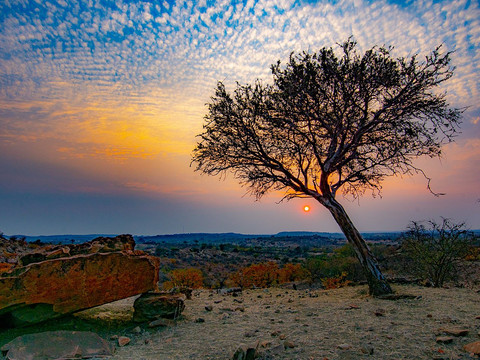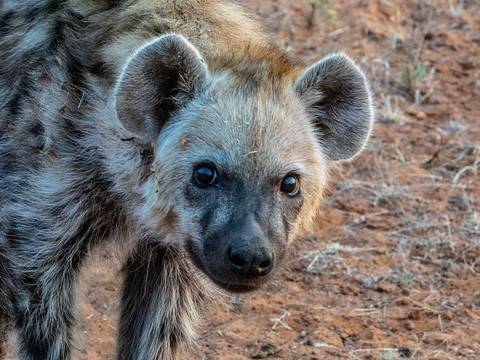Wildlife rich in species, dramatic deserts, a seemingly endless salt pan as well as luxurious and authentic accommodation - southern Botswana is still considered a little insider tip and is one of the world's top safari destinations par excellence. Elephants live here in large numbers, big cats roam freely, the biodiversity is enormous - from the endangered African wild dog to water antelopes, from rhinos that have made their home here to thousands of flamingos that provide a pink spectacle in the sky.
Whoever hears of Botswana thinks first and foremost of the two glorious national parks, the Okavango Delta and Chobe National Park, with the adjacent Victoria Falls. The entire south is often forgotten and is not even included in a trip by many; however, varied landscapes of unbelievable beauty and a fascinating animal world await here. Due to its low population density of only three people per square kilometre and unspoiled nature, Botswana is considered the ultimate safari destination as far as the south is concerned. Around 70 percent of the more than 580,000 km2 country is covered by the Kalahari Desert in the southwest. A visit to the Kgalagadi Transfrontier Park in the extreme southwest, which shares borders with South Africa, is highly recommended. The 28'400 km2 protected area forms one of the largest and most fascinating wildernesses on the entire African continent. Red dunes alternate with open dry savannah. The king of beasts wears black mane here - according to official estimates, 450 individuals live in the park - alongside large herds of springbok, oryx antelope, eland and wildebeest, as well as cheetah, leopard, wild dog and hyena. To discover this unique wilderness, I recommend, as for the whole of the south, renting a four-wheel drive vehicle and planning at least three nights in the reserve. For example, at Nossob Rest Camp, where simple chalets are available. If you want to experience the most luxurious ambience of Kgalagadi, you should book accommodation at !Xaus Lodge. The facilities include a swimming pool, cultural activities and excellent safaris.
The further east you drive, the drier the landscape becomes. The Central Kalahari Game Reserve, or CKGR for short, is the centre of the arid south and a stunning place. If you like seclusion, the silence of the desert and the roar of lions at night, you might well have found one of your favourite places in Africa here. With a protected area the size of Denmark, the CKGR is one of the largest protected areas in Africa. There are artificial waterholes at various places in the area, where you can also meet the black-maned Kalahari lion, among others. The most famous place in the Game Reserve is Deception Valley, where Mark and Delia Owens have studied black-backed hyenas and lions. The Kalahari Plains Camp, with its well-equipped tents, is a great place to stay and offers bush walks with the local San.
Another highlight awaits you in the central south of Botswana. The Sowa, Nxai and Ntwetwe Pans together form the 12'000 km2 Makgadikgadi Pans, a network of salt pans with white dusty dry lakes. Stay overnight not far from the village of Gweta at Planet Baobab, a camp with well-equipped huts surrounded by ancient baobab trees. We recommend an excursion into the salt pan, which you can explore yourself at the wheel of quads. As a sort of supplement, a large meerkat family is waiting at the edge of the pan, accustomed to people and happy to be photographed.
In Nata, a convenient stopover to reach the deep south-east of Botswana, the Nata Bird Sanctuary beckons. While the area provides a protected habitat for zebras, jackals and foxes, the real attraction is the impressive birdlife, where pink and red-backed pelicans, Cape ducks and pink and lesser flamingos can be seen in large numbers. When the elegant birds all take to the skies together, the sky turns pink - a spectacle you won't soon forget.
If you've never encountered elephants in the wild, be sure to stop at Elephant Sands Lodge, where the pachyderms enter camp unhindered at dusk to drink and bathe at the waterhole.
Great rhino photos can be taken at the Khama Rhino Sanctuary. In the game reserve, 30 white and four black rhinos are protected. Some of them have been successfully reintroduced into the wild.
The Tuli Block in the far south-east is one of Botswana's best-kept secrets. The 20 km wide stretch of land along the Limpopo River has a great density of wildlife. Also striking is the attractive landscape, which clearly stands out from the rest of the country. The lunar landscapes in shades of orange and brown as well as the hills paired with a deep blue sky are reminiscent of Arizona or Australia. This barren landscape, peppered with unusual rock formations, is home to elephants, giraffes, lions, cheetahs, hyenas and even leopards. A beautiful place to stay with safari opportunities is the noble Tuli Safari Lodge in the midst of a landscape of red rocks that is bursting with wildlife. Treat yourself to your sun-downer under the open sky at the bar, which is built around a 500-year-old nyala tree.

To properly prepare for your trip
How you get there:
Via Johannesburg to Gaborone or Maun.
How long should I go:
3 - 4 weeks
How you get around:
Four-wheel drive vehicle www.sunnycars.ch
Best travel time:
May to October (dry season)
Accommodation tips:
For Kgalagadi:
https://www.xauslodge.co.za
In the CGKR:
https://wilderness-safaris.com/our-camps/camps/kalahari-plains-camp
Makgadikgadi:
https://planetbaobab.travel
Nata:
https://www.elephantsands.com
Tuli:
https://www.tulilodge.com
Highlights:
Game viewing, excursion to the salt pans, Tuli block.
More info:
www.namibia-tourism.com
Realised by Michael Bachmann
Further travel pictures under www.kissed-by-nature.com
